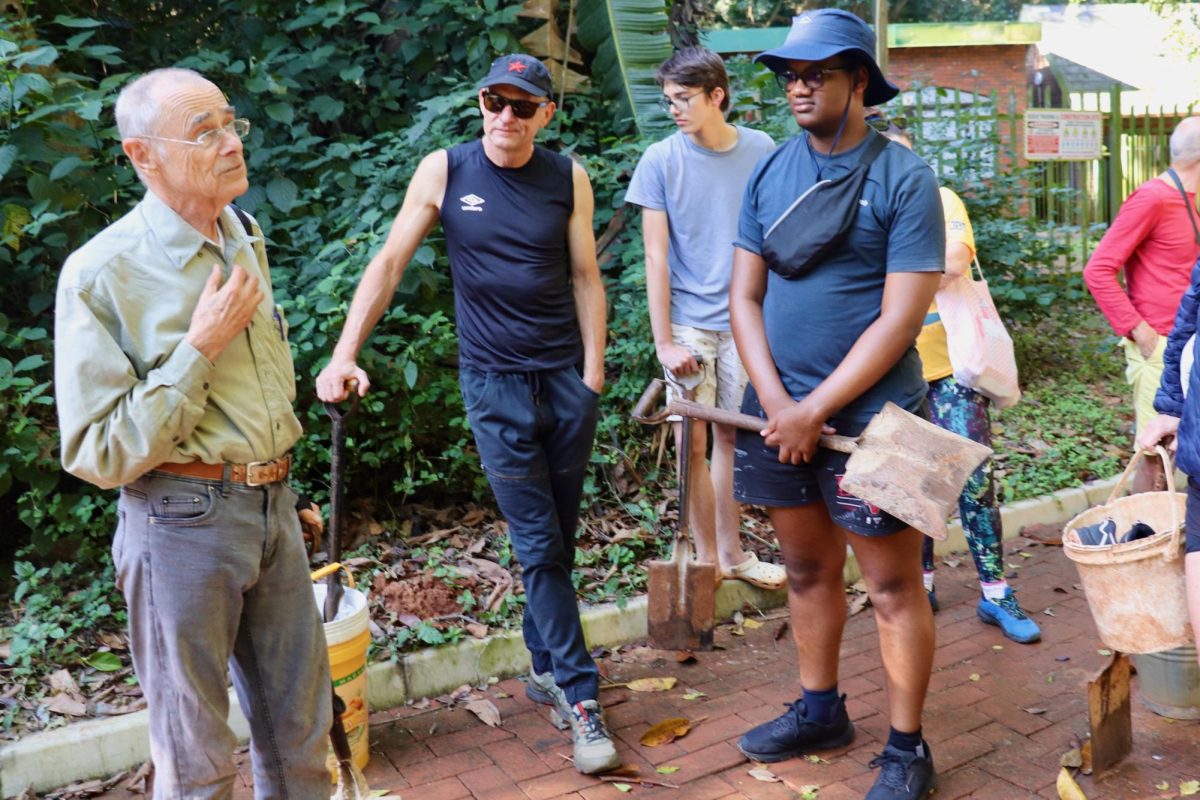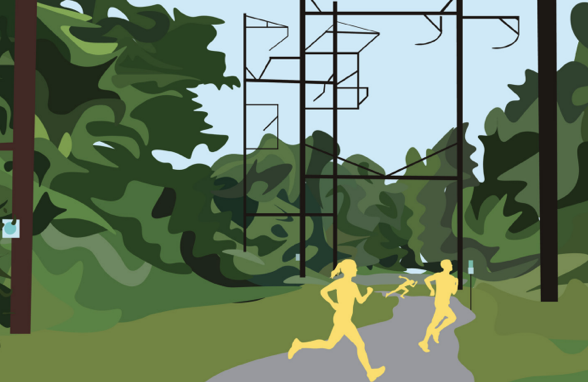Combating “hurry sickness” with moments of mindfulness
On an unusually sunny and warm Friday after-noon in February, I decided to lace up my Sauconys and take my chances at running three-and-a-half miles to the Cynwyd Heritage Trail — a walking trail which leads to a 100-year-old arched bridge that connects Lower Merion, PA to Manayunk, Pennsylvania.
As someone who often feels trapped inside their apartment, I knew I needed some time away from campus in order to reset my headspace. Even though I wasn’t really sure how to get there, I enjoyed the challenge of finding my way to this new trail by foot. I ran through some neighborhoods, stopped at a few traffic lights and crossed a couple of streets before I could behold one of the most quaint trails I’ve ever seen.
The two-mile trail parallels the SEPTA Cynwyd train line, which explains the silhouette of electrification rail poles against the blue sky. Running next to these dominating sights of steel placed me in a state of pure intrigue. As I admired the sheer height of each pole, I soon forgot about the fact that my legs were moving and my heart was pounding. The stress and anxiety that weighed heavy on me that day suddenly disappeared. If pure bliss was a tangible place, this was it.
As a college student, I don’t always get the opportunity to interact or see a diverse demographic of people. However, while running on the trail, I noticed that families were out and about, young people were walking their dogs, and older adults were speeding down the trail on their bikes. Being outside and seeing all of these different people helped ground me in the moment. For the first time that week, I actually felt present, liberated and happy.
When I finally made it to the arched bridge that spans above the Schuylkill, the sun was starting to set over Philadelphia. As it slowly disappeared behind the treeline that faces the row home dwellings of Manayunk, a feeling of peace wrapped itself around me. I welcomed its gentleness and grace as I made
my way back to my apartment.
The sense of urgency and anxiety that I felt before I went on my run was replaced by runner’s-high-induced euphoria. In Strava, an app to track physical exercise, I noted that during this particular run “I was just enjoying my run and the beautiful views” and that it was “such a great stress reliever.”
Despite the fact that going on a run made me feel so good, it’s ironic that I don’t actually go on runs very often. Unfortunately, like many people living with a rat race mentality, I am plagued with something called “hurry sickness.” Hurry sickness is not a medical condition or mental illness diagnosis. Instead, it’s a symptom of time urgency, which describes those who are “tied to the clock” and are trying to do too many things at once.
In a TED Talk titled “This Could Be Why You’re Depressed or Anxious,” Johann Hari discusses how “we live in a machine that is designed to get us to neglect what is important about life.” Hari stresses the importance of fulfilling our psychological needs as a way to pursue and instill more moments of meaning
and purpose in our lives; and one way to do this is to simply spend more time outdoors.
When we are in a state of chronic stress, like being overworked all of the time, it activates the hypothalamus pituitary adrenal axis, which releases a hormone called cortisol. Cortisol helps prime your body for instant action, known as the flight-or-fight response. However, high levels of cortisol over long periods of time can cause a loss of synaptic connections between neurons and a shrink in brain size, specifically the prefrontal cortex, which is the part of the brain that regulates behaviors like concentration, decision-making, judgment and social interactions.
According to a TED-Ed video on how stress affects the brain, Madhumita Murgia suggests that the most effective way to reverse the release of too much cortisol is to practice meditation and exercise regularly. Not only do these activities help center our breathing, but it also helps us become more aware and focused on our surroundings, thereby decreasing stress levels.
At the end of the video, Murgia reminds us that we must take control of our stress before it takes control of us. Seeking out moments of mindfulness is a choice we continually have to make in order to combat the physical, mental and spiritual toll of hurry sickness. Whether that be meditating every morning (Molly’s Morning Meditation on Spotify is a great place to start if you’re interested) or going on a run to your favorite trail.
Committing to a regular practice of these activities plays a crucial role in helping us find meaning, purpose and happiness in life. Mindfulness looks different for everyone, but for me, my run into Manayunk was one form of meditation. I found solace in the way my feet hit the pavement. I found peace in the way I was surrounded by those who were at very different points of their lives than me.
On the trail, I could shed any and all notions I had about myself. When I’m running, I don’t have to live up to my people-pleasing and overthinking tendencies. All that’s required of me is to be present and enjoy the run.








































Patrick Miner • Feb 24, 2022 at 6:07 am
This is a beautiful article, thank you Leslie. I´ll only add what I think Johann Hari would say: “one way to [meditate] is to simply spend more time outdoors”…NOT LOOKING AT A MOBILE PHONE SCREEN. Yes, running and exercise seem to instantly cure all kinds of physical and mental problems, but as Thich Nhat Hanh (recently passed away) would point, just walking – even and maybe especially on campus or in your neighborhood – can be a form of meditation, as long as one mindfully observes their real surroundings (e.g. other people, surrounding architecture) instead of looking down at an electronic screen. To me listening to music on headphones doesn´t induce “hurry sickness” as unfortunately much of what one hears on city streets is motor vehicle noise pollution.